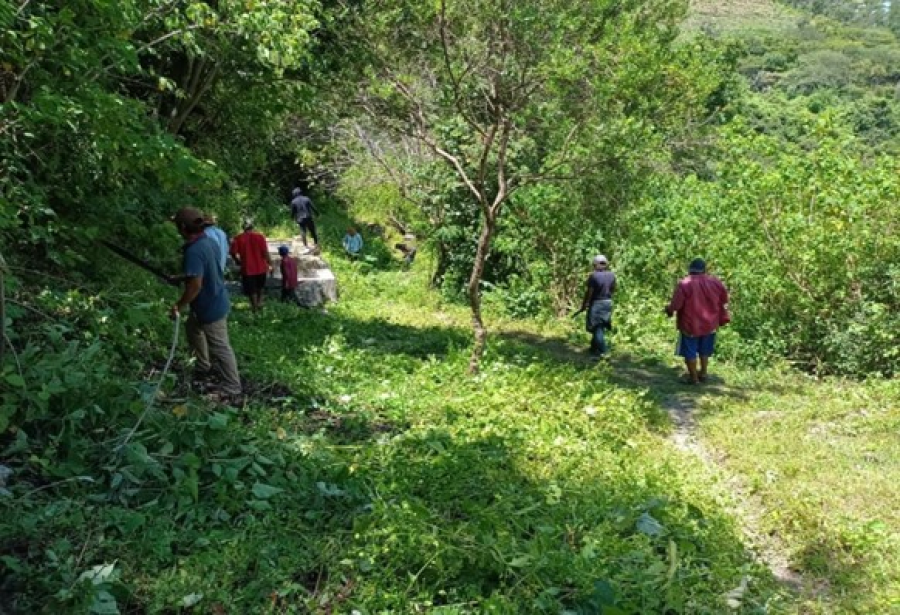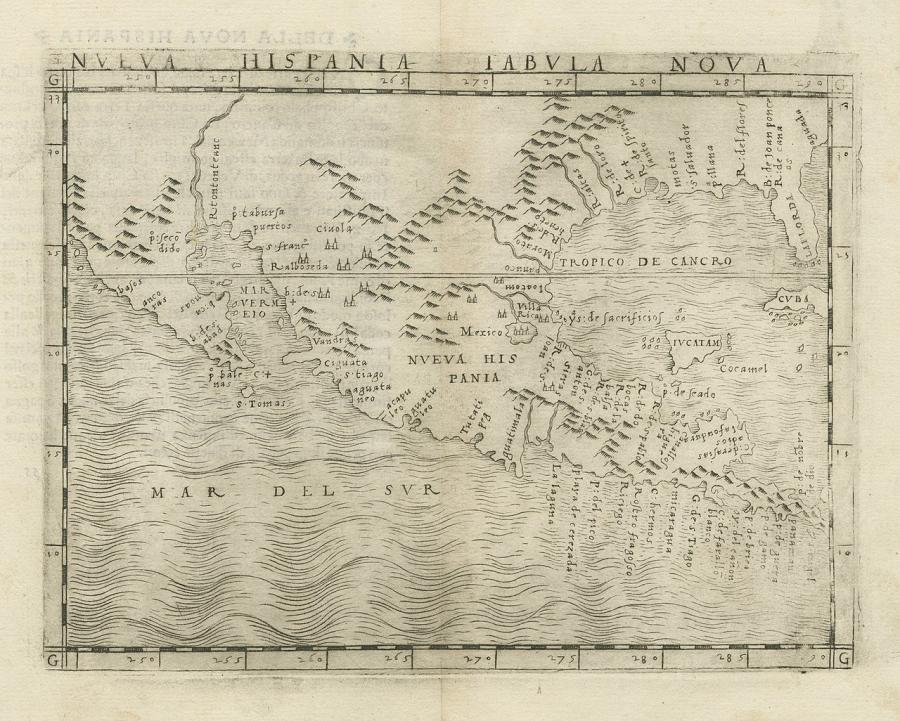Indigenous autonomy or self-determination is understood as respect for the internal practices and decision-making modes of indigenous pueblos. I use the term pueblos here to refer to the multiple usages understood in Mexico, including, "towns," "communities," and "peoples." Autonomy also means that indigenous communities participate in the various levels of economic, political, cultural, and legal decision-making associated with the state. The Zapatista rebellion in Chiapas, Mexico which exploded in January 1994 has provided an important political opening for the negotiation of indigenous autonomy in Mexico at the national level. Movements for indigenous autonomy at the regional and local level, however, have a long history. For example, in 1974, the First Indigenous Congress held in San Cristobal de las Casas was multiethnic and its 1230 delegates included 587 Tzeltales, 330 Tzotiles, 152 Tojolabales, and 151 Choles representing 327 communities. Impressive regional indigenous gatherings were held elsewhere in Mexico as well in the 1970s and 1980s.
The current political juncture examined in this issue focuses not only on the need to guarantee indigenous autonomy at the national level and to have it built into the Mexican Constitution and accompanying legislation, but also to ensure that the right of indigenous peoples to organize autonomously at local, regional, and national levels is respected. What this requires is a new relationship between the Mexican state and indigenous peoples. As stated by author Luis Hernandez, "The old pact between the state and Indian peoples has broken down and a new pact must be established based on new premises."
The struggle for indigenous rights and self-determination in Mexico involves four key arenas which are the focus of this issue. These include: 1) on-the ground experiences of autonomy both historically and currently; 2) the signing of the San Andrés Peace Accords on Indigenous Rights and Culture and their implementation; 3) the creation and maintenance of a national movement for indigenous autonomy in Mexico out of diverse experiences and interpretations of autonomy and self-determination; and 4) a redefinition of the relationship between Indian peoples and the Mexican state away from the historical focus on indigenism, which had assimilation as its goal.
In many areas throughout Mexico, indigenous peoples have historically engaged in the practice of autonomy at community and regional levels. Among the Mixe of Oaxaca, for example, community autonomy has existed for centuries and an ethnically and linguistically homogeneous Mixe district was created in 1938 which remains intact to this day. In Chiapas, 38 self-declared autonomous municipalities and pluriethnic regions have established their own sets of governing structures since 1994. The (Huicholes) of Jalisco have solidified their self-determination through organizing their communities into a regional organization that regained traditional territory through petitioning government land tribunals. And in a transnational political space that spans the US-Mexican border, Zapotecos, Mixtecos, and Triques have created organizations and coalitions which defend indigenous rights and self-determination outside of the boundaries of states.
Here we highlight examples of on-the-ground experiences of indigenous autonomy among: the Wixaritari (Huicholes) of Jalisco through their successful struggle to regain more than 10,000 hectares of their territory through the Union of Indigenous Huichol Communities (UCIH) (Chavez and Arcos, Voice of the Four Pueblos/UNIH); the Mixe of Oaxaca who through using their own institutions such as the community assembly and traditional authorities have been able to resolve land disputes and community conflicts (Augilar and Regino); the Tzotziles of Chiapas who through civil organizations such as the Bees and the Zapatista Army of National Liberation have challenged government militarization and paramilitarization of their communities (Stephen). Indigenous organizations have also built models of transnational autonomy that transcends state boundaries through the building of cross-border movements such as that forged by indigenous peoples of Oaxaca between Mexico and the United States, the Oaxacan Binational Indigenous Front (FIOB) (Rivera).
A second key part to understanding the context of indigenous rights and self-determination in Mexico today includes the crafting and signing of the San Andrés Peace Accords by the Zapatista Army of National Liberation and the Mexican Federal government in 1996 as well as their implementation. The Accords on Indigenous Rights and Culture lay the groundwork for significant changes in the areas of indigenous rights, political participation, and cultural autonomy. Most importantly, they recognize the existence of political subjects called pueblos indios (indigenous peoples/towns/communities) and give conceptual validation to the terms "self-determination" and "autonomy" by using them in the signed accords. The accords emphasize that the state takes responsibility for not only reinforcing the political representation of indigenous peoples and their participation in legislatures, but also for guaranteeing the validity of internal forms of indigenous government. They further note that the state promises to create national legislation guaranteeing indigenous communities the right to: 1) freely associate themselves with municipalities that are primarily indigenous in population; 2) to form associations between communities; and 3) to coordinate their actions as indigenous peoples.
In addition, the Accords state that it is up to the legislatures of individual states to determine what the best criteria are for self-determination and autonomy. These criteria should accurately represent the diverse aspirations and distinctions of indigenous peoples. It is important to note that the accords do not deal with the key issues of land redistribution and agrarian policy, notably the revision of Article 27 of the Mexican Constitution in 1992 which ended land reform and encouraged privatization of communally-held land. Under the rubric of the San Andrés Peace Accords, these issues are supposed to be dealt with in upcoming discussions on political reform, economic development, and land reform. The original response of Zapatista base communities to the Accords on Indigenous Rights and Culture noted their lack of resolutions regarding land and indigenous control of resources.
In October of 1996, the EZLN and the National Commission of Concord and Pacification (COCOPA) announced that a joint commission had been formed for the verification and follow-up of the accords on indigenous rights signed in February of 1996. The commission included representatives from the EZLN, from the Mexican government, from the National Commission of Concord and Pacification (COCOPA) and from the National Intermediation Commission (CONAI). Following the formation of the follow-up commission, a proposal for legislation elaborated by the COCOPA and endorsed by the EZLN was rejected by the Mexican president, Ernesto Zedillo, in December of 1996. He stated that the COCOPA legislative proposal for the San Andrés accords could result in the creation of a system of reservations and the balkanization of the country. In addition, he noted that Mexico's Indians should not be granted "special rights," but should be given the same rights as all Mexicans. Since that date, the government has not moved from its position. In the fall of 1998, Bishop Samuel Ruíz disbanded the CONAI because of a complete lack of conditions for further peace negotiations. One of the lacking conditions was the government's failure to implement its own treaty on indigenous rights.
While the Mexican government has made no progress in implementing the accords on indigenous rights, it has taken the movement for indigenous autonomy extremely seriously, embarking on a sustained campaign to not only disable the legislative process for implementing the peace accords it signed in 1996, but also engaging in a brutal and highly visible campaign to "take out" autonomous municipalities in Chiapas that run parallel self-declared autonomous governments in opposition to counties and town councils run by those affiliated with the Institutional Revolutionary Party (PRI) in Chiapas. This campaign to dismantle autonomous communities with the combined force of state security police and the army was waged in spring and summer of 1998. In addition, local paramilitary groups have collaborated with local PRI members to harass, intimidate, and murder local activists involved in autonomous parallel governments that are sympathetic to the Zapatista Army of National Liberation (EZLN). Such a paramilitary group was responsible for the massacre of 45 Tzotzil men, women, and children in December of 1997 in Acteal. The first anniversary of this massacre and the increasingly tense political situation surrounding it is highlighted in the lead article here (Stephen).
The process of writing and signing the San Andrés Peace Accords and the struggle for their implementation is discussed in several articles focusing on the negotiations that produced the accords and their breakdown (L. Hernández, Stephen), on the differences between the proposal of the congressional Commission for Pacification and Concord (COCOPA) accepted by the EZLN and President Ernesto Zedillo's counter initiative sent to the Mexican Congress in 1998 (Lopez), and on indigenous women's participation in formulating the San Andrés accords (A. Hernández). We also include an English translation of Indigenous Women's Proposals to the National Indigenous congress in 1996 which address legislative reform to Article Four of the Mexican Constitution and the rights of indigenous women.
Another key element in understanding the struggle for indigenous rights and self-determination in Mexico is the creation and maintenance of a national movement for autonomy in Mexico. Part of the reason why there is currently the potential to build a strong national movement can be found in the historical strength of regional indigenous movements throughout Mexico, particularly since the 1970s. When indigenous militancy grew in the 1970s, Mexican government policy switched from top-down indigenism to "participatory indigenism" in an effort to co-opt and incorporate some indigenous leaders and organizations into government-aligned and funded indigenous organizations and support institutions. While in some cases such efforts succeeded, in others, such as that of the government-created National Council of Indian Peoples (CNPI), the "official" organization split, and generated an autonomous branch which still exists today and is active in the autonomy movement. In the late 1980s, when Mexico led the way in Latin American to recognizing indigenous rights by being the first to ratify convention 169 of the International Labor Organization (ILO), an additional political opening was provided for indigenous organizing. After changing Article Four of its constitution in 1990 to recognize Mexico as a nation having a pluricultural composition and the conferring of cultural rights on indigenous peoples, the state opened further ground for political debate and opposition when it conducted several fly-by night "consultations" with indigenous peoples which left out most organizations and communities. Such tactics led to autonomous regional meetings that often protested the lack of input by indigenous peoples into the legislation process for implementing Article Four of the Constitution as well as providing a platform for furthering indigenous discussions on the meaning of autonomy at a national level. In Oaxaca, on September 6, 1993, a National Form of Civil Society titled "The Poor Construct Their Own Social Policy" brought together indigenous representatives from Guerrero, Oaxaca, Chiapas, and Hidalgo who together developed a critique to the government's plan for implementing Article Four. Other similar meetings took place throughout Mexico. Many indigenous organizations also participated in a wide range of activities protesting 500 years of colonialism in 1992. Thus there was a significant precedent for indigenous autonomy well before the launching of the Zapatista Rebellion in 1994.
The initial peace negotiating processes between the EZLN and the Mexican government built on the prior work carried out by many indigenous organizations and communities in relation to the struggle for indigenous autonomy. The San Andrés Accords are a testament to that earlier work. The process of writing the accords and the Mexican government's subsequent refusal to implement the accords they signed, led to another phase of organizing. In October of 1996 after six months with no action from the government to implement the signed accords, a new national constellation emerged in Mexico called the National Indigenous Congress (CNI). The CNI included people who had participated in previous national efforts to organize and network as well as new actors who were incorporated for the first time into a national grouping. The first meeting of the CNI was held in Mexico City. Prominent in this new constellation was a proposal for the adoption of "customs and traditions" which had its base in the experience of Oaxaca. The notion of Oaxacan communal autonomy is based in collective institutions such as tequio or communal work obligations, methods of selecting local authorities, and the preservation of language and ritual. In 1995, the Oaxaca state legislature approved a change in the state constitution to allow the election of municipal authorities through traditions and customs (usos y costumbres) in recognition of the indigenous autonomy movement. In 1997 the Oaxaca Congress approved a legislative plan that gave indigenous communities the right to name their municipal authorities without the intervention of political parties in accordance with local traditions, thus implementing the changes made to the state constitution in 1995. The example of Oaxaca and the fact that the state government of Oaxaca has legitimized local forms of government have been important in fueling the national autonomy movement. A question often raised is why has the government made it legal to elect local officials according to customs and traditions in Oaxaca, but has refused to implement a similar proposal at the national level?
Following the initial 1996 meeting of the CNI, the Zapatistas organized a forum on indigenous rights in San Cristóbal de las Casas in which the notion of both autonomous regions (which would constitute a fourth level of government in between the county/municipal and state level) and customs and tradition were the basis of discussion. Out of this forum came a set of proposals which the EZLN took to government negotiations and were influential in the Accords on Indigenous Rights and Culture which were signed by the Mexican government and the EZLN in February 1996.
Thus a key force in the creation of the accords and the demand for their implementation has been an emergent national movement for indigenous autonomy which has pulled together local and regional indigenous movements as well as previously unorganized indigenous community authorities. The goal of the movement in pushing for the implementation of the accords is not secession from Mexico, but inclusion as part of a multicultural state that embraces multiple pueblos and grants them regional autonomy. This vision of indigenous autonomy projected from Mexico provides a hopeful vision for ethnic conflict which often results in either ongoing war or secession.
Building a national movement is fraught with differential interpretations of what indigenous autonomy means, particularly in relation to region and to gender. Here we include articles that focus on the emergence of the National Indigenous Congress (L. Hernández), and a discussion of the tension between customary notions of indigenous "customs and traditions" and a challenge to some of these by indigenous women (A. Hernández, Proposal of Indigenous women to the National Indigenous Congress). The contributions of cross-border movements to building a national network and movement to autonomy are also touched upon (Rivera). Finally, we offer readers an English translation of the Resolutions of the first meeting of the National Indigenous Congress held in October, 1996.
The final key arena of the San Andrés Accords is the way in which they require a reconfiguring of the relationship between the Mexican government and indigenous peoples. The heart of the national proposal for recognizing indigenous autonomy in Mexico is based on a tripartite cultural-political model that brings together multiple indigenous pueblos (which may be small numbers of people in a few hamlets, a municipio, or a region who share an ethnic identity and history), the Mexican nation as a multi-ethnic and diverse entity (la nación), and the state (el estado), as a political and legal framework. The glue holding this three-part model together is indigenous Mexican nationalism. This nationalist vision builds a common identity around being Mexican and indigenous but within a multi-ethnic state. In this model, the national political boundaries of Mexico should defend an internal plurality of cultural boundaries -- not through assimilation, but through granting self-defined cultural entities autonomy in regional and local economic, political, and social decision-making. Thus the pueblos indigenas are autonomous within the Mexican state and with a shared sense of participation and inclusion in the Mexican nation. In their analysis, indigenous leaders sever the nation from the state and liberate the concept of nation to be re-appropriated from below in relation to particular regional and historical circumstances. Such a reinterpretation also allows for the simultaneous existence of a larger nation tied both to a state political structure, but also to indigenous pueblos with unique historical constructions.
Several of the articles included discuss the possibilities for a new relationship between the Mexican government and indigenous peoples. The process of writing the San Andrés accords and their content have provided Mexico with a new blueprint for building a nation of diversity that finally dispenses with the historical national policy of indigenism (L. Hernandez). Such a new relationship also offers the possibility for transforming the Mexican government's National Indigenous Institute (INI) and other government institutions targeting indigenous peoples. Such institutions could radically refashion themselves to both channel resources to indigenous peoples according to their own agendas and to guarantee their individual and collective rights (Yanes). At a larger level, the San Andrés Accords demand that conceptions of national identity and sovereignty recognize the collective rights of indigenous peoples at the national level (Gomez).
When current on-the-ground experiences of autonomy are looked at in relation to the construction of a national movement for autonomy against the backdrop of the San Andrés accords, the potential for a qualitative leap forward in the struggle for indigenous rights in Mexico is evident. While the outcome of the national straggle for indigenous autonomy in Mexico is highly uncertain as of the writing of this document, what will endure is the alternative model of relationships between indigenous pueblos the larger Mexican nation, and the state which is being experimented with in Mexico. Indigenous people in Mexico have moved through the Zapatista opening from the political margins to having a seat at the table of national power.
Article copyright Cultural Survival, Inc.



